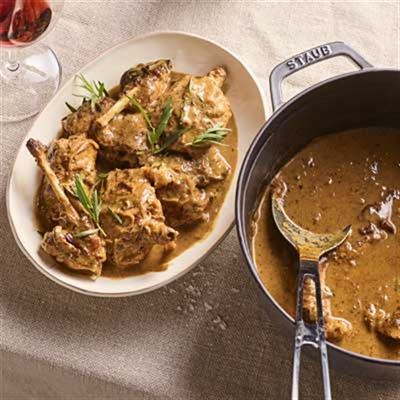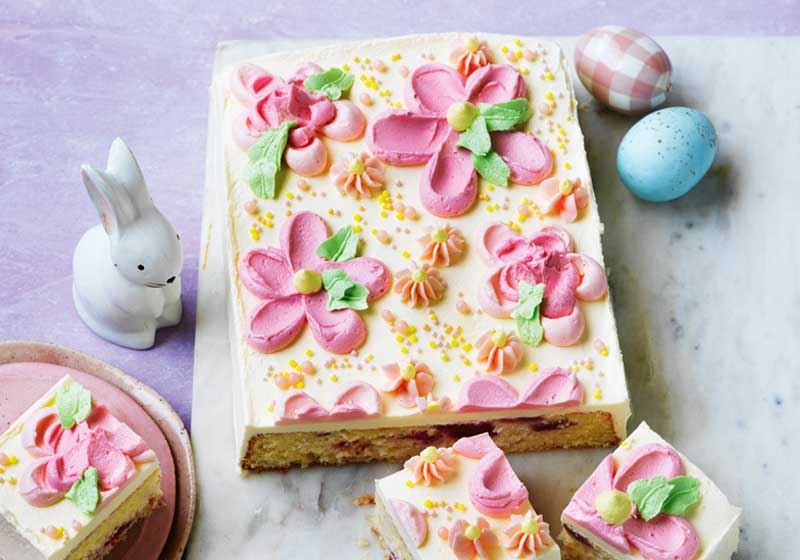Braised Rabbit Pot Roast with Dijon Mustard, Tarragon and Shallots

Ingredients
1.5 kg farmed rabbit
125 g good-quality Dijon mustard
2 Tbs olive oil
40 g salted butter
10 golden shallots, sliced
200mL dry white wine
500mL chicken stock
1 bay leaf
5 each thyme sprigs and parsley sprigs, tied together with butcher’s twine
125mL crème fraiche
Pinch of white pepper
5 sprigs tarragon, leaves picked and roughly chopped
Salt and pepper, to season
Potato gratin and simple dressed butter lettuce salad (optional), to serve
Method
Joint the rabbit by removing the rear legs and front runners. With a cleaver or large knife, cut across the saddle into three sections, leaving the fillets connected to the bone. Discard the rib cage. Cut the rear legs in half. Rub half of the mustard onto the rabbit pieces and season with salt and pepper.
Heat 1 tablespoon of the oil and 20 g of the butter in a heavy cast-iron pan or flameproof casserole dish. Add the shallot and cook over a medium heat until golden, for about 5 minutes. Remove from the pan and set aside.
Put the same pan back onto the stove without washing it. Heat the remaining oil and butter over a high heat until foaming, then add the rabbit pieces and cook, turning to brown on all sides, for around 10 minutes until golden. Add the white wine and deglaze the pan, scraping the base of the pan with a wooden spoon.
Simmer vigorously until reduced by half, then add the chicken stock, glazed shallots, bay leaf, thyme and parsley. Cover the pan with a lid, reduce the heat to medium-low and cook gently for 30–40 minutes, turning the rabbit pieces from time to time. Remove from the heat and rest for 15 minutes.
Transfer the rabbit to a plate and cover with aluminium foil to keep warm.
Discard the bay leaf and thyme and parsley from the braising liquid, then bring to the boil over a high heat and cook until reduced to about 250mL. Whisk in the crème fraîche, white pepper, tarragon and remaining mustard. Taste and season with salt and pepper if needed.
Return the rabbit to the pan and serve with potato gratin and a simply dressed butter lettuce salad.

Photo Credits: Photography: © Mark Roper 2023








